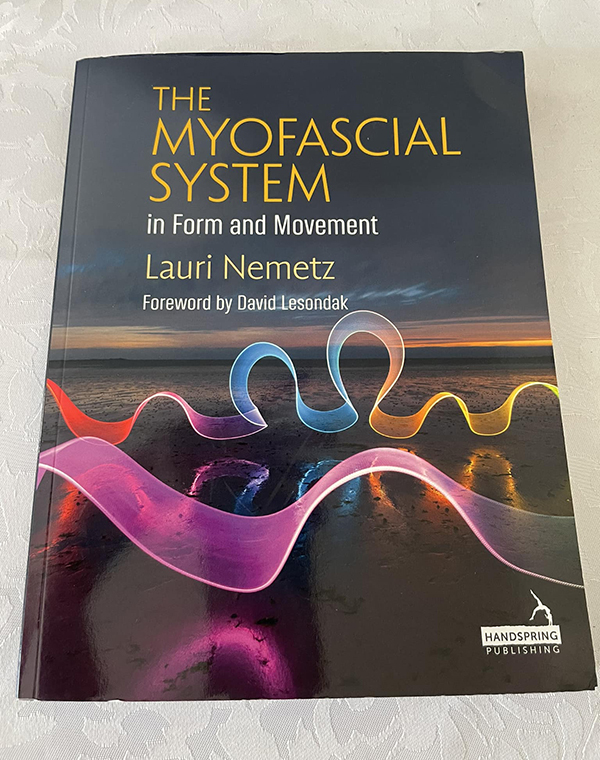
As a qualified Anatomy Trains Structural Integration Practitioner, and Pilates Instructor, I am always searching for books to read, and when The Myofascial System in Form and Movement came on the market I grabbed the opportunity to buy it with both hands.
Lauri Nemetz is a major contributor to the myofascial and anatomical world.
As a Professor, she specialises in myofascial anatomy, is a licensed Creative Arts Therapist, a member of the American Association for Anatomy, a board-certified member of the Academy of Dance/Movement Therapists, a certified Yoga and Pilates Instructor and has a Masters Degree in Dance/Movement Therapy (Psychology). Lauri was a faculty member for Anatomy Trains (certified by Tom Myers) and was a lead dissector for the international team of the Fascial Net Plastination Project. She also co-teaches movement and dissection workshops with Leslie Kaminoff through KNMLABS.com and other groups.
The foreword is written by David Lesondak, also with an extensive anatomy background. He is a Structural Integration, Visceral Manipulation and myofascial specialist who has been working for many years trying to explain what fascia is.
The book includes 33 contributors, all with extensive backgrounds in Anatomy or movement, including the likes of James Earls, Dr Robert Schleip, Dr Rebecca Pratt, Julie Hammond, Madeline Black and more. Each chapter includes “sound bites” when these contributors offer their unique perspectives on direct areas of fascia and movement.
In the past few years of buying endless new books to read on ‘fascia”, sometimes I would feel overwhelmed with the endless depth of information. The reason I love this book is its simplicity when explaining various concepts relating to movement and myofascia.
The book is clear and concise, outlining concepts such as what fascia is, what it does, a section on body analysis, the importance of the myofascial lines of connection, concepts of the core, and sections including yoga, Pilates and weight training.
There are several interesting parts of the book, making connections with myofascia and nature, the evolution of the body in motion, and the body in motion and emotion, reminding us all that a connected body matters. The last chapter focuses on fascia in the aging body, and the importance of interoception, neuroreception, exteroception and proprioception as we get older.
The section on Pilates features Rebecca Rotstein, with contributions from Madeline Black and Tracey Mellor. This section relates to spirals, dynamic stability, the relationship between synergy, tensegrity and Pilates equipment, as well as recognising that Pilates is a whole body system that stretches, strengthens and supports the myofascial system.
At the end of each Chapter in the book, Lauri provides references and recommended reading materials. Before I knew it, I found myself exploring down many “rabbit holes” such as geometric and non geometric shapes, an unexpected tangent but a discovery of beauty by design.
This is what this book does, it inspires you to seek more. It is less of a text book, and more of an interesting read as Lauri has a brilliant way of using relatable analogies to describe complex systems in the body, making it easy for the reader to follow and understand. She uses her wealth of knowledge and experience to weave together both anatomy and physiology applying this to movement concepts.
This is the type of book that will be a constant re-read reference for any movement professional. It is such a beautiful book by Lauri, and a must have for all Pilates Instructors and movement professionals, It is definitely one of my favourites.
For further information, Lauri’s website is www.wellnessbridge.com
Catherine Wilks, Owner of East Gippsland Structural Integration and p-i-l-a-t-e-s Studio

Comments are closed.